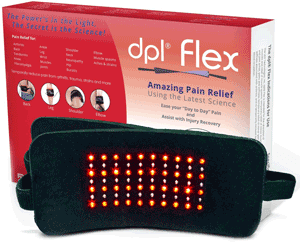There are a plethora of studies and expert opinions regarding red light therapy. The rejuvenating and healing properties of red light are definitely worth some attention. Still, understanding the benefits is one thing, but getting the right device to get the most out of your therapy takes a little research. The following should help you choose the right red light therapy device.

Table of Contents
Find the Experts in The Field
The easiest thing you can do is just go the experts who perform the right red light therapy. Now, every person may not have access to a professional. You have to find out if your state has spas, physical therapists, or doctors who have this type of therapy available in their establishment.
The reason it is hard to find specialists is because the technology and studies are relatively new. This means many of these establishments are just not open to the concept just yet, or they may be conducting their own research before offering this therapy to their clients.
It should be noted that red light therapy is also known by some of the following names:
- LLLT or low level light therapy
- LILT or low intensity light therapy
- photobiostimulation
- biostimulation
- photobiomodulation
- photonic stimulation
- photorejuvenation
Choosing a Device for Your Home
The key is to find the right wavelength and energy strength to ensure that the light is able to penetrate the skin. What you want is a eight to 10mm skin penetration. This ensures that the skin is able to absorb as much light energy as possible, which helps produce some of the following effects:
- Improved blood circulation
- An enhanced formation of new capillaries
- Increased lymph system activity
- A boost in the production of collagen and fibroblasts
- Improved release of ATP, which basically means more raw cellular energy
- Increased phagocytosis, which means more effective cellular cleansing
- Significant tissue granulation stimulation
- Most forms of inflammation may be reduced
Wavelength
One thing you should look at is the wavelength of the device you are considering. There are a number of ranges, and they each have their benefits. It starts with the 600 nm range, which is as close to orange as you can get, and it ends somewhere near 900 nm. Now, 900 nm is basically infrared, and you might find it, but most red light therapy devices do not reach this number. The common range for this type of device is actually between 630 to 700 nm.
Now, looking at this under a microscope shows that most studies on this type of therapy seem to focus on ranges from mid-600 nm to low 800 nm though there are a few who went as high as mid-800. Those who are considering an in-house device should definitely consider these ranges since they have been proven effective.
Energy Output
Another aspect that needs to be considered is the energy the device will actually generate. This is important because it will correlate with how much energy will be absorbed by the body’s cells. There is only so much that cells can absorb, which should be taken into account.
Research shows that the amount of energy can have an impact on the focus of the red light therapy. For example, those who are looking for skin benefits might want to stick with four to six Joules/cm2.
People who are suffering from joint inflammation may need to step it up a notch and consider a device that produces as much as 120 Joules/cm2.
Transfer Time
The next thing that needs to considered is how long the device will take to deliver the energy. The easiest devices to understand are the ones that flatly measure the energy output in Joules per minute, which makes it easy for you to figure how much time you will need under the red light.
Some devices show the photo flux or the irradiance, which usually reads as mW/cm2. You are going to have to do a little math to figure this out. You will need to take the energy in Joules and divide that by the photo flux number. Once you have gotten the answer from that division, then just multiply it by 1000, which should give you the estimate in seconds.
Conclusion
Now, some devices do the work for you and give you the estimate on the pamphlet or the instructions, which makes using the device much easier. Of course, it is always a good idea to talk to an expert about red light therapy to get all your questions answered before making the purchase. You can also just opt to talk to your doctor or physical therapist to get a better idea of what it means to initiate this type of therapy. Hopefully, this guide will make it easier for you to choose the ideal red light therapy device to fit your needs.


